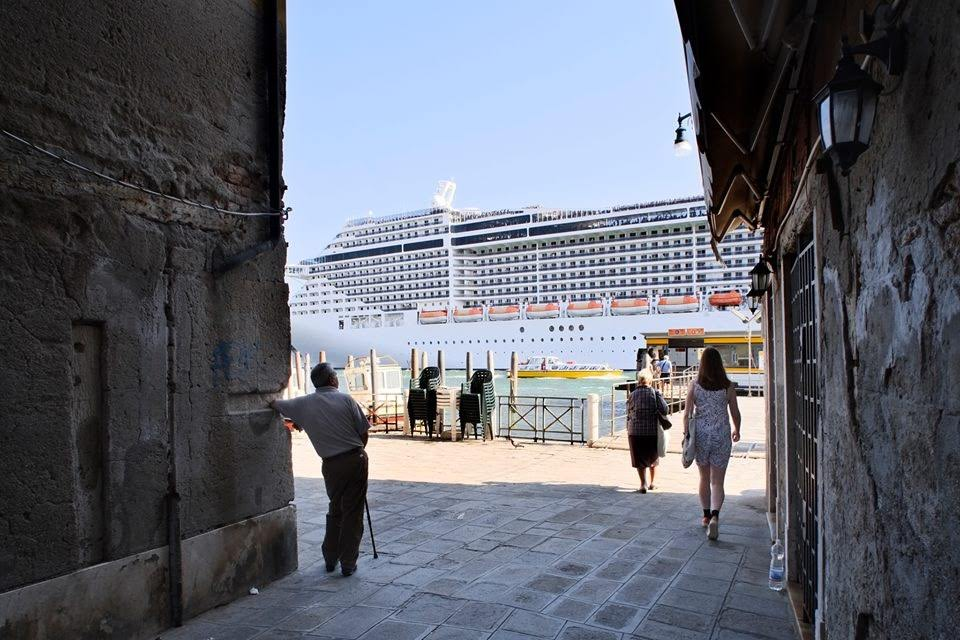| The case of Venice and the impact of climate change on heritage |
| PublishDate:2021-10-01 Hits:355 |
The site of Venice and its Lagoon (Italy), inscribed on the UNESCO World Heritage list in 1987, was proposed for inscription on the List of World Heritage in Danger this year. It was the third time for Venice to be presented as a potential site at risk, and, for the third time, it was voted not to be nominated. On 22 July, the Unesco World Heritage Committee (WHC) session, coordinated online from Fuzhou, began with the recommendation from the representatives of the World Heritage Centre and Icomos to list Venice among the sites at risk. This was not to downgrade Italy’s role in preserving the city and its environment, they said. Still, not enough progress has been made since the 2014 Unesco’s recommendations, when Venice was first notified to be possibly listed as an endangered site.
In January 2020, the joint Unesco/Icomos/Ramsar advisory mission reported that among the main problems of Venice were: the lack of overall vision and the uncoordinated management at all stakeholder levels, the inadequate tourism management, and the persisted deteriorating effects of human intervention on the lagoon ecosystem, which combined with climate change, threatens the site to irreversible change.
Climate change has become one of the most significant threats to World Heritage properties. It potentially impacts their Outstanding Universal Value, integrity and authenticity, and their economic and social development at the local level. According to the IUCN World Heritage Outlook, published on 2 December 2020, climate change is the most prevalent threat to natural sites. Furthermore, it also poses a severe threat, including floods, extreme weather events, desertification, and decay of cultural landscapes, to many cultural heritage sites. The key to successful mitigation is to reduce stress from unsustainable human activities, which aggravate the negative impact of climate change. In this regard, an updated policy document on the impacts of climate change on World Heritage properties was drafted by the Committee in July.
The document accounts for the updating process of the 2007 Policy Document on the impacts of climate change on World Heritage properties and the different climate change-related activities undertaken to protect natural and cultural World Heritage properties. Initiatives include establishing a Technical Advisory Group of experts in the fields of natural-cultural heritage and climate change. The Technical Advisory Group discussed the inscription of a property on the List of World Heritage in Danger on account of climate change. In particular, experts questioned whether a property should be inscribed on the WH List while knowing that its OUV may disappear due to climate change impacts and whether a property should be inscribed on the List of WH in Danger or deleted from the WH List due to impacts beyond the control of the concerned State Party. Today we know that some natural and cultural properties won't maintain their original OUV, even if effective adapation and mitigation strategies are applied. So then, how to act in these cases? Should we outline an “evolving” assessment of OUV?
While waiting to find answers for this challenging present, decisions about Venice stalled once again. At the committee session in July, the delegate of Ethiopia claimed the decision of the Italian government to ban large cruise ships from the centre of Venice and opposed listing. Norway was the only country to state that “despite the progress assessed on some issues identified, crucial problems remain yet unresolved that are already resulting in significant loss of historical authenticity as well as important loss of cultural significance”.
Other observers were only allowed to speak after the committee had taken its decision. Europa Nostra and World Heritage Watch (WHW) – this latter also representing the action groups FAI, We are Here Venice, WWF Venezia, Cittadini per L’Aria and LIPU Venezia – said that the ships ban was a first step in the right direction, but too small. Venice, they said, needs a holistic long-term plan focused on climate action, defined with the support of Unesco, the EU and civil society. “This plan must be based on the full implementation of all SDGs, on resolute climate action that puts culture and cultural heritage at its heart, and on due involvement of citizens and local communities.” As a result, Italy must submit an updated state of conservation report of Venice and its lagoon by 1 December 2022. Any further decisions will be discussed at the 2023 WHC meeting.
A cruise ship sails the Giudecca canal in the historic center of Venice in February 2016 @ AP Pola Whitrap 2021 |
- News | WHITRAP Shanghai and CNR-ISPC bilateral meeting
- News | WHITRAP meets Cité de l’Architecture et du Patrimoine
- WHITRAP Hosting "Workshop on Preliminary Assessment for National Focal Points of the Asia Region" in Chengdu
- WHITRAP Shanghai meets UNESCO
- INTERNATIONAL CONFERENCE PRELIMINARY ANNOUNCEMENT & CALL FOR PAPERS
- Observation of the 46th Session of the World Heritage Committee
Copyright © 2009-2012 World Heritage Institute of Training and Research-Asia and Pacific (shanghai)



